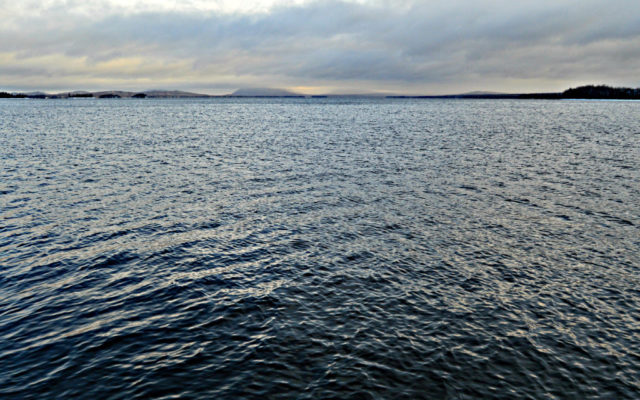
Catch-and-release purists are using flawed logic
By Julie Harris, Bangor Daily News Staff
Some fishermen just love the sport, while others fish to eat the catch.
Still others like to release everything back into the lake or pond where they caught it. It’s aptly called catch and release.
There are bodies of water where the state mandates catch and release, but others rely on fishermen to keep certain species of fish, such as lake trout, in check to maintain a proper ecosystem.
Fishermen don’t necessarily agree on when catch and release is appropriate, or in regards to which species, and they feel very strongly about whichever side they have chosen on the issue.
Some of the nastiest arguments I have seen on social media or heard among fishermen over the years have had to do with this practice.
Fishermen who advocate for only catch and release are vehement that if you throw it back, the fish will grow bigger and be even more fun to catch the next time around. Trout, salmon, bass, pike. It doesn’t matter to them what it is.
Some of these fishermen don’t eat fish of any kind, but just like to catch them. Given the growing number of Maine ponds and lakes that carry warnings about PFAS contamination, I cannot say that I blame them on some level for not eating the fish.
But catch and release 100 percent of the time is flawed logic.
Preserving a fishery for the next generations is not as simple as catch and release. That practice can have the opposite effect, causing an imbalance between food and population that results in skinny, unhealthy fish or allowing the non-native species — however they got there — to thrive over the natives in a body of water.
“Many fishing regulations are designed to improve fish growth and size quality, and they are only successful if fish are harvested by anglers. A lack of harvest can cause fish to stunt and not grow,†the Maine Department of Inland Fisheries and Wildlife says on its website.
This conclusion was based on scientific research performed by experienced fisheries biologists.
There are lakes and ponds in the state where catch and release has been an issue. Sebago Lake for example.
Sebago was one of four lakes in Maine that had an indigenous strain of landlocked salmon in the late 1800s, according to James Pellerin, the state regional biologist for Sebago Lake area. Sebec, Green and West Grand lakes were the others, but Sebago is the only one with a strong wild salmon population today at 80 percent wild vs. 20 percent stocked.
Lake trout stocked by the state and alewives and pike introduced illegally really upset the balance for the native wild salmon population in Sebago. The non-native fish ate the salmon’s preferred food of rainbow smelts. The lake trout multiplied while the native salmon and smelts dwindled.
Part of the problem was the tendency of fishermen to catch and release the lake trout. By September 2023, Pellerin estimated that 70 percent of the lakers caught were released back into Sebago.
Changes to the rules that allowed an unlimited number of lake trout under 26 inches and only one over that length to be kept per day has helped restore some of the balance. But the state has stopped short of mandating must-kill rules for lake trout, bounties or commercial netting of the fish to thin out the population.
There is a better balance now, Pellerin said.
Catch and release practices were part of Sebago’s problems, but in other lakes and ponds, that method saves the fishery.
That’s true especially where there are native species like Maine’s iconic brook trout or Arctic charr — Maine has the only indigenous population in the lower 48 states — that are fewer in numbers and need time to replenish or where there are endangered species to protect.
Educating ourselves about our favorite fishing holes and choosing to do the best thing for that place is really a better approach than all or nothing. Catch and release may or may not be the right choice.
But knowing those places and the laws and rules associated with them will help fishermen be part of the solutions in fishery management and not the problem.